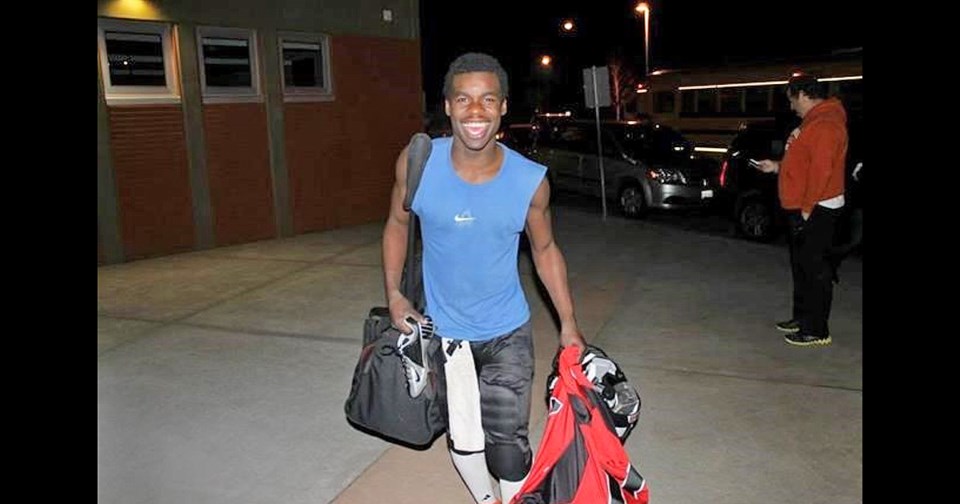REGINA — Testimony wrapped Monday afternoon in Regina on the first full day of the inquest into the death of Samwel Uko.
Uko was the 20-year-old from Abbotsford, B.C. who was found deceased at Wascana Lake on May 21, 2020, after he reportedly sought medical help twice for mental health issues and was turned away at Regina General Hospital.
The inquest began Monday with Coroner Robert Kennedy presiding. At the end of the inquest, it is expected the six-member jury will make determinations on how, when, where and by what means the death occurred, as well as offer possible recommendations for the future.
Members of Uko’s family were among those in attendance during the proceedings, held at the Ramada Plaza. Also in attendance were lawyers for the coroner’s office, for Regina Police Service and the Saskatchewan Health Authority.
The first half hour of the inquest Monday saw numbers drawn to select the jury, with three men and three women eventually being seated.
After a brief recess, testimony began with the first witness, Daniel Ripplinger of the Regina Fire Department. He had been called to the scene at Wascana Lake for the efforts to recover the body of Uko from the water.
"What happened to Mr. Uko was a tragedy," Ripplinger told the inquest.
On the stand, Ripplinger confirmed the body was recovered at 9:25 p.m. He also testified that "one thing I know for sure" was seeing an SHA business card alongside Uko’s belongings found beside the lake. "At the time, it seemed kind of bizarre.”
The afternoon session saw two witnesses called.
The first was Dr. Andreea Nistor, who was qualified as an expert witness in forensic pathology.
Nistor had performed the autopsy on Uko on May 22, 2020. She testified that in her external examination, Nistor said she could not find any sign of injuries: bruises, scratches, stab wounds or external injuries. There were no signs of trauma, she said, but foam was present on his mouth.
She also conducted an internal examination, noting that in the air pipes there was a thin-coloured foam extending through and evidence of water in the lungs. There was also hemorrhaging behind the larynx.
Nistor explained a finding of drowning was a “diagnosis of exclusion” where all other possibilities need to be excluded, such as heart attack or stroke or other possibilities such as drugs.
Based on the foam and fluid in the airways, she concluded the cause of death was “consistent with drowning.”
However, the questions that followed zeroed in on the Benadryl that was found in Uko’s system in the toxicology report.
Nistor had noted that it was in the “safe range.” But she was pressed by SHA counsel Reginald Watson about the toxicology report, and in particular the issue of whether Benadryl could have caused drowsiness. Nistor insisted if the levels fell within the range of a normal dose, she did not think that was a major factor.
Next up was John Ash, executive director of Urban Acute Care at Saskatchewan Health Authority.
Ash was questioned at length about the process Uko encountered when attempting to be admitted to the hospital on May 21, as well as the investigation that followed.
Two visits to ER
Ash confirmed he was made aware that Uko was in the emergency room twice on that day. The first time, Uko met a doctor and was assessed by nursing staff, and it was determined he could be discharged and receive care in the community.
On the second occasion at Regina General that afternoon, Uko had gone through COVID-19 screening and went to registration where there was “confusion regarding his identity,” said Ash.
“He was kind of stuck between triage and registration triage,” Ash testified.
He said that due to lack of clarity about existing process as well as communications gaps, Samwel was “escorted unfortunately, inappropriately” out.
Ash accepted SHA’s responsibility for what transpired on May 21.
“We did not provide Samwel care he deserved. We failed him,” Ash said.
“There was obviously some process, steps, that either weren’t followed to their intent, or there were gaps in the process.”
Ash described the improvements SHA brought in to address what had happened so it would not be repeated. It was noted having a COVID-19 screening actually “distanced patients” from getting the care they needed, so the screening was moved into the triage portion.
Ash also spoke about the identification policy. He said the SHA has reaffirmed that it was OK to register someone as unidentified, because “then they can get care.” They could reconcile the records afterwards, he said.
In the case of individuals with symptoms of mental health distress, a room will be made available so that the patient could be assessed. This would “directly deal with what happened with Samwel” who was caught in that space between administration and triage.
The main change, Ash said, addresses situations where the patient is stuck between being seen in the admission process and being seen by a clinician. The big change is they will not be refused care: they cannot leave until a formal assessment is made by a clinician.
“You have to see a doctor,” Ritter asked. Yes, responded Ash.
Ash’s testimony took up most of the afternoon, as he was questioned by all counsel as well as by members of the jury.
Proceedings finally wrapped shortly after 4 p.m.
A busy week of testimony is expected, with 25 people on the witness list to be called. It is expected the inquest will continue through Friday, when instructions to the jury are expected to take place.


